Cervical osteochondrosis – a disease of the spine that results in degenerative changes in the intervertebral discs. In the first stage, the symptoms are almost unnoticeable, but with the spread of the pathological process, the patient's condition is getting worse.

The reasons for the outbreak of the disease
Osteochondrosis arises as a result of the uneven loading of the spine. The factors are:
- heavy physical exertion;
- wearing the wrong shoes;
- malnutrition;
- the problem with the exchange process;
- nervous and emotional exhaustion.
The disease may occur during the performance of the child. A lot of risk in multiple pregnancies. The pathological process may be genetically determined.
The scene, as well as photos
The development of the disease is slow. There are 4 main phases to the disease:
- The very first stage. The patient feels discomfort after long walks, and stay in the same position. They are formed in the print of the vertebral discs.
- The second-stage. The pain is what actually happened. The doctor prescribes manual therapy and pain relievers.
- The third phase is. There are marked degenerative changes in the intervertebral discs.
- And the fourth stage. The final stage of the disease, which affected almost all parts of the spine.
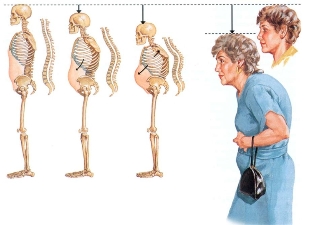
In the final stage of the conservative treatment will be ineffective. The doctor prescribes surgery, which will require a long recovery.
A common symptoms.
Low back pain may include one or more of the spine. The most commonly affect the cervical vertebrae. The clinical symptoms of such bias is directly related to the operation of the brain. Consider all of the main symptoms of this disease.
A pain in the neck, neck-and-neck-area
Patients often have neck pain, occipital, and neck area. This is due to a lack of blood supply to the brain. Deformation of the vertebrae leading to compression of the vertebral artery. Against the backdrop of all these degenerative processes may have happened to a hernia.
Along with the pain, there is a risk of serious complications. For example, a disruption in the blood pressure, or persistent impairment of hearing and vision. Sometimes, patients who have had panic attacks and anxiety disorders. They are able to last for 30 minutes. A condition called diencephalic syndrome.
The other reason for the pain is a spasm of the muscles, which leads to a reduced flow of blood to the. The patient may temporarily lose the ability to move his neck. The strong strain leads to the fact that the symptoms of whiplash start to flow in your head, and you can continue to spread to the scalp. In such a process, the patient is suffering from a severe migraine headache.
The noise, the speed, the feeling of stuffiness in the ears
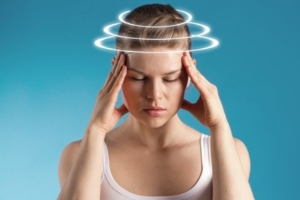
This is a complex of signs and symptoms is referred to as a cochlear or cochlear. The doctors are not always able to associate such a deviation with the development of cervical degenerative disc disease.
The noise and the ringing in the ears are what happens when you change the position, or for a longer stay in one position.
Dizziness
The cervical vertebrae are quite thin, so keeping the head, they are subjected to heavy loads. They are more prone to deformation of the vertebrae of the thoracic. As a result, the deviation happens and dizziness, which can be:
- System. There is a sense of a circular movement of the body, and the surrounding areas. This happens due to the malfunctioning of the vestibular apparatus, muscles, and receptors in the joints.
- Is not in the system. A patient presents with a feeling of faintness, stunned and uncertain ground in a vertical position. The meaning of the circle of rotation to be missing.
If you have any of these symptoms, you must immediately consult a doctor. The reasons for the urgent hospitalization of the patient:
- stiffness of the shoulder;
- paralysis of the muscles of the face;
- loss of consciousness;
- the severe headache.
Displaced vertebrae, and the muscular spasm gives rise to the major nerves that nourish the brain. Due to the lack of oxygen have dizzy spells. Initially, the oxygen deficiency occurs in the back of the head, as it is the center of the vestibular apparatus.
The lack of air
The lack of air in the osteochondrosis can be of several types: trouble breathing, and shortness of breath. Hard breathing in the background of the major nerves that transmit signals from the pharynx to the esophagus.
The lack of air is caused due to a pinched nerve. The result is a spasm of the diaphragm, which may result in changes to the depth and rhythm of your breathing. The patient and becomes stuffy and difficult to breathe.

This is a serious symptom such as shortness of breath, osteochondrosis dangerous the development of some other complications. In this case, the doctor prescribes the drug.
Nausea
Cervical cancer is the most sensitive, because of its structure, there are a large number of nerve fibers and blood vessels. It passes through the neck artery that carries oxygen and nutrients to the brain. With cervical osteochondrosis formed in the protrusion and a herniated disc.
To the rear of structures in the brain receive low levels of arterial blood pressure. This is causing a compensation reaction. The narrowing of the arteries, leading to an increase in blood pressure. The patient, a feeling of nausea.
If you don't get back in the flow of blood to the hind brain structures, the patient developed vomiting and loss of consciousness. A long stroke, increase the risk of developing a stroke and further disability.
Problems with vision
Osteochondrosis of the neck, the patient may experience double vision, floaters, and tremor. They point to the emergence of serious diseases that are running in the background of an osteochondrosis. These include the following diseases:
- glaucoma;
- cataract surgery;
- a disease of the Claude Bernard-Horner.
It is very important to monitor the change of the state of the database. This is a very important symptom that indicates a health problem.
The jumps in blood pressure
In the beginning, it may seem that way to the blood pressure, and low-back pain do not have anything to do with. However, it is not. The degenerative changes in the spine affect the autonomic nervous system.
The jumps have been observed in the course of the day. For this disease is characterized by the high blood-pressure.
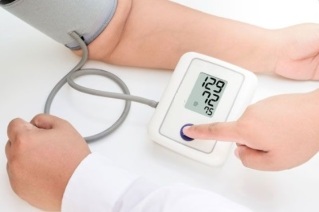
Hopping with the dynamics of today's uretralnoe hypertension occurs when the reflex irritations of the nervous terminations and is one of cramps krovenosnyh vessels.
Symptoms of high blood pressure in the cervical osteochondrosis:
- a severe headache;
- the pressure peaks after the stress or muscle strain;
- pain in the extremities: arms, legs, etc.;
- the low sensitivity in the neck area.
All of a sudden fainting, or syncope
All of a sudden fainting may occur as the result of a brief interruption of the blood flow in arteries vertebral. If the patient loses consciousness, it has to be used, so that his feet were above his head. It activates the flow of blood to your brain. After fainting, you may experience problems with speech and movement.
Pharyngeal problems
Sometimes, at the onset of the degenerative processes of the cervical vertebrae, may be undertaken only pharyngeal symptoms. They manifest themselves through the following:
- difficulty swallowing;
- a sore throat;
- a foreign body sensation in the throat;
- itching.
However, such characteristics are associated with injury to the neuro-vascular trunks, which run from the spinal cord. However, these symptoms have been observed not only in osteochondrosis, but also the inflammation and the swelling.
An increase in the temperature of the body
With a cervical osteochondrosis, an increased body temperature. This symptom occurs when the following lesions:
- vertebral artery syndrome;
- a disc protrusion;
- stenosis of the spinal canal.
Fever may be caused by a neurosis, neurological zabolevaniem and fibromyalgics syndrome. Sometimes, there are certain pathological conditions which exacerbate the signs and symptoms of degenerative disc disease.
The manifestations depend on the stage of the disease

- In the first phase of the development of the disease, the symptoms may not be observed. The first signs of the beginning of a degenerative process: a headache, a slight limitation of physical activity, in the neck, headache, discomfort in your neck and back pain. These signs become pronounced when turning or tilting the head.
- In the second phase of development begins with the protrusion of the spinal discs, brain-cracks begin to taper off. The pain becomes more severe, there is a ringing in the ears and sleep disturbances.
- The third stage is characterized by the destruction of the fibrous ring of the disc. There are dislocations and displacements of the vertebrae, herniation in the cervical spine.
- In the fourth stage, the most degenerative changes, are irreversible.
That occur in the brain?
Signs and symptoms in the brain that can be pronounced or minimal. Cerebral deviations only occur if there is severe compression of the vertebral artery bony outgrowths. As a result, there are problems with the access of blood to the brain, which causes the spasms of the small blood vessels and hypothalamic dysregulation.
With cervical osteochondrosis can cause the following syndromes:
- Hypothalamic. It could be neurological, and physical.
- Syncope and drop-syndrome. These are the costs that the patient feels weakness in legs and loss of consciousness for a few minutes.
- Vestibular-central. There were isolated dizziness in his head were turning.
As a result of these degenerative processes, the patient is trying to avoid public places. In this way, it can be an unreasonable fear, and depression.
However, the differences in women and men.
The symptoms of cervical chondrosis of the men and women are virtually indistinguishable. The degenerative changes in the cervical vertebrae are more common in women, this is due to the anatomical structure of the uterus. In men, the cervical musculature is better developed.
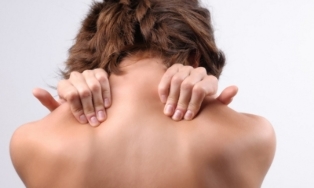
Chondrosis of the spine in children and adolescents
Chondrosis of the spine in children and adolescents it is caused by a General delay in the development of the body's connective tissue. This may be the result of a genetic abnormalities or disorders of the mineral metabolism. Immature intervertebral discs are subject to a variety of pathological processes.
The disease is caused by a sedentary lifestyle, long sitting at the computer, and the availability of the excess weight. The signs and symptoms of this disease are similar to the signs and symptoms of osteoarthritis in adults. The point of the throat of the patient is experiencing pain in the neck, dizzy spells, and migraines.
The diagnosis
Prior to diagnosis, and medical treatment, the doctor will conduct a few diagnostic tests. The external review estimated the position of the body, and it is a study of musculature.
Computed tomography
Computed tomography allows you to see the bone in the 3D projection. According to this principle, the implementation of this process is similar to an x-ray. However, such a diagnosis allows you to view a layered image.
This procedure is not available for children and pregnant women, because of the high-dose x-ray irradiation. Among the contraindications include lack of patient's ability to remain in a stationary position for a few minutes.
The X-ray
The X-rays, is a classic procedure which has been assigned to a diagnosis of degenerative disc disease. It is virtually harmless, and it allows you to assess the extent of degenerative changes. By using this technique, it is possible to detect the disease at an early stage.
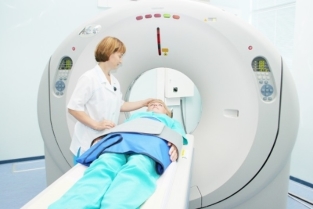
The X-rays do not allow us to obtain cross-sectional images of the affected tissues. There are a number of the more modern and informative method of investigation. The x-ray is only suitable for the initial diagnosis.
Osteochondrosis is a dangerous condition that, without timely intervention, can lead to irreversible degenerative changes, and disability. In the initial stage, it may be only a mild inconvenience. With the development of the pathological process, the pain becomes more intense. When the first signs of lesions in the spine, you should immediately consult a physician.

































